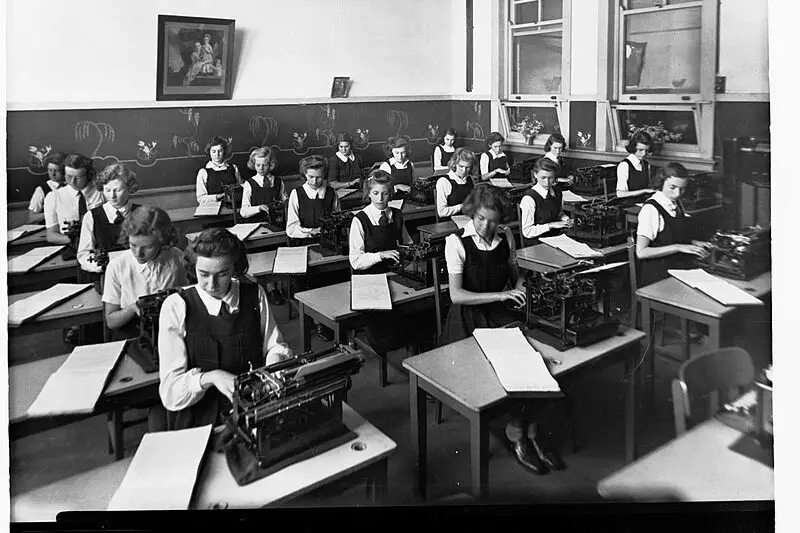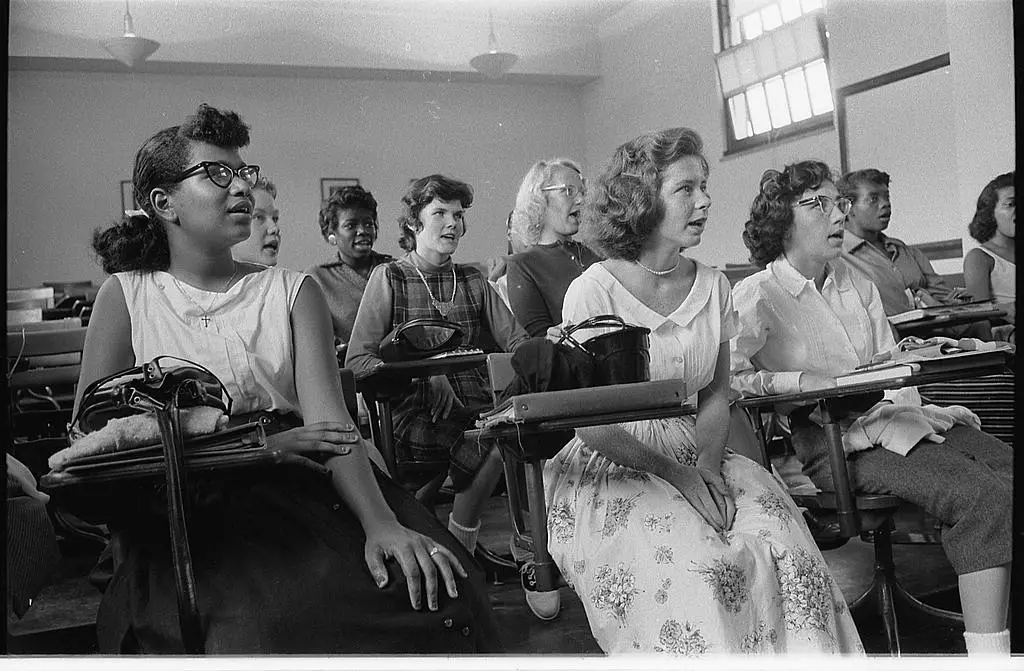1. Home Economics: The Lost Art of Practical Living

Home economics might sound old-fashioned today, but in the ’60s, it was an essential part of the school curriculum. Students learned everything from cooking and sewing to budgeting and nutrition, preparing them for life skills beyond just academics. The hands-on approach helped students gain a sense of independence and practical knowledge that was useful for both men and women.
In a world where the emphasis is often placed on technology and abstract subjects, the return of home economics could do wonders for practical problem-solving and self-sufficiency. Imagine a class where students can learn how to balance a checkbook, sew on a button, or cook a meal from scratch—skills that are just as valuable today as they were then.
2. Typing: The Foundation of Digital Literacy

Before computers were everywhere, typing was a class that everyone had to take, and it made sense. In the ’60s, typewriters were the tool of choice, and students were taught how to type efficiently and with accuracy. At the time, it was considered an essential skill for office work, but its importance goes beyond the workplace.
With the rise of digital communication, typing has become even more critical in today’s world. Although many schools now incorporate keyboarding lessons into their tech curriculum, a dedicated typing class could ensure that students master the skill. Learning to type quickly and accurately is still one of the most valuable skills for anyone in a modern workforce.
3. Civics: A Foundation for Informed Citizens

Civics classes in the ’60s were designed to teach students about the government, the Constitution, and their role as citizens in a democratic society. This subject helped students understand the political system and the importance of participating in local, state, and national elections.
In today’s world, where political apathy seems to be on the rise, bringing back civics could make a world of difference. By reintroducing civics education, we would encourage the next generation to stay informed, make better voting choices, and become active participants in the democratic process. This knowledge could also help students better understand the news and debates happening around them.
4. Industrial Arts: Crafting with Purpose

In the ’60s, industrial arts classes were common in many schools, offering students a chance to get hands-on experience with woodworking, metalworking, and other practical crafts. These classes weren’t just for future engineers or carpenters; they allowed students to develop problem-solving skills, creativity, and an appreciation for manual work.
Reviving industrial arts today would give students an outlet for their creativity and provide a meaningful alternative to more academic-focused courses. With a greater emphasis on digital work in schools today, it’s easy to forget the value of working with your hands. Whether it’s building something functional or simply learning how to use different tools, the benefits of these skills are still incredibly relevant.
5. Music Appreciation: Rediscovering the Soundtrack of History

While many schools continue to offer music classes, the concept of “music appreciation” has fallen by the wayside. In the ’60s, students were taught to understand the historical context of different musical genres, from classical to jazz to rock and roll. It wasn’t just about learning to play an instrument—it was about understanding the role music played in shaping culture.
In today’s digital age, music appreciation classes could help students gain a deeper understanding of the music that continues to shape popular culture. It would also encourage students to explore different genres, expand their musical tastes, and perhaps even inspire them to pick up an instrument themselves. Music is a universal language that helps define generations, and it deserves a place in the classroom again.
6. Health Education: More Than Just Anatomy

Health education in the ’60s often included lessons on personal hygiene, nutrition, and even mental health. While it wasn’t as comprehensive as today’s health classes, it gave students a foundation for taking care of their physical and emotional well-being.
In our current climate, where mental health is increasingly recognized as just as important as physical health, a revamped health education class could address both areas in a meaningful way. Teaching students how to recognize signs of stress, how to maintain a balanced diet, and how to care for their mental health could provide lifelong benefits. A more holistic approach to health would empower students to take better care of themselves, both now and in the future.
7. Latin: The Language of History

Latin may not be a language spoken in everyday conversation, but in the ’60s, it was considered an essential part of a well-rounded education. Latin provided students with a foundation in grammar and vocabulary that made learning other languages easier, and it also opened doors to understanding classical literature, law, and medicine.
Bringing Latin back into the curriculum could offer the same benefits, especially in a world that increasingly values global communication. Latin may not be the most practical spoken language, but its structure and influence on other languages make it a valuable tool for understanding language and history. For students interested in law, literature, or science, Latin is still the key to unlocking many academic fields.
